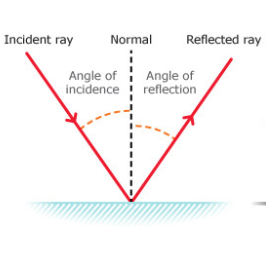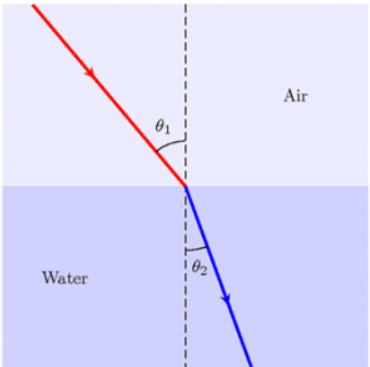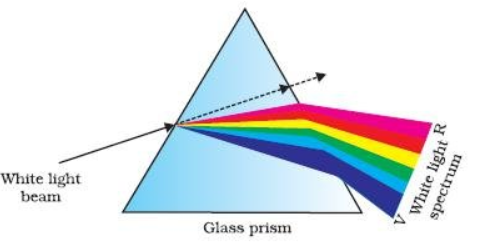
The phenomenon by which the incident light falling on a surface is sent back into the same medium is known as
A. Reflection
B. Refraction
C. Dispersion
D. None
Answer
133.2k+ views
Hint: Optical phenomena happen when light waves interact with matter. Examples of this are Reflection, Refraction, Dispersion, etc.
Complete Step by step solution:

Reflection is the phenomenon by which any incident wave-front falling on a surface is sent back into the same medium where it originated. There are three laws of reflection that are
(i) The incident ray, the reflected ray and the normal at the point of incidence, all lie in the same plane.
(ii) Angle of incidence is equal to Angle of reflection.
(iii) The reflected ray and the incident ray are on the opposite sides of the normal.

Refraction is the phenomenon of bending of a light wave or change in its direction when it is going from one medium to another. A lens is a refractive surface used for many purposes, such as magnification.

Dispersion is the phenomenon in which the white light when passed through a glass prism splits into its spectrum of colours. This phenomenon along with refraction is responsible for the formation of rainbows in the sky.
So the answer to the given question is Reflection, option (A)
Note: Reflection is the bouncing back of light in the same medium when incident on any surface.
Refraction is the bending of light when it goes from one medium to another.
Dispersion is the splitting of white light into its spectrum of colours when passed through a glass prism.
Complete Step by step solution:

Reflection is the phenomenon by which any incident wave-front falling on a surface is sent back into the same medium where it originated. There are three laws of reflection that are
(i) The incident ray, the reflected ray and the normal at the point of incidence, all lie in the same plane.
(ii) Angle of incidence is equal to Angle of reflection.
(iii) The reflected ray and the incident ray are on the opposite sides of the normal.

Refraction is the phenomenon of bending of a light wave or change in its direction when it is going from one medium to another. A lens is a refractive surface used for many purposes, such as magnification.

Dispersion is the phenomenon in which the white light when passed through a glass prism splits into its spectrum of colours. This phenomenon along with refraction is responsible for the formation of rainbows in the sky.
So the answer to the given question is Reflection, option (A)
Note: Reflection is the bouncing back of light in the same medium when incident on any surface.
Refraction is the bending of light when it goes from one medium to another.
Dispersion is the splitting of white light into its spectrum of colours when passed through a glass prism.
Recently Updated Pages
Sign up for JEE Main 2025 Live Classes - Vedantu

JEE Main Books 2023-24: Best JEE Main Books for Physics, Chemistry and Maths

JEE Main 2023 April 13 Shift 1 Question Paper with Answer Key

JEE Main 2023 April 11 Shift 2 Question Paper with Answer Key

JEE Main 2023 April 10 Shift 2 Question Paper with Answer Key

JEE Main 2023 (April 11th Shift 2) Physics Question Paper with Answer Key

Trending doubts
JEE Main 2025 Session 2: Application Form (Out), Exam Dates (Released), Eligibility & More

JEE Main 2025: Conversion of Galvanometer Into Ammeter And Voltmeter in Physics

JEE Main 2025: Derivation of Equation of Trajectory in Physics

Wheatstone Bridge for JEE Main Physics 2025

Electric field due to uniformly charged sphere class 12 physics JEE_Main

Electric Field Due to Uniformly Charged Ring for JEE Main 2025 - Formula and Derivation

Other Pages
JEE Advanced Marks vs Ranks 2025: Understanding Category-wise Qualifying Marks and Previous Year Cut-offs

Diffraction of Light - Young’s Single Slit Experiment

Dual Nature of Radiation and Matter Class 12 Notes: CBSE Physics Chapter 11

If a wire of resistance R is stretched to double of class 12 physics JEE_Main

JEE Advanced 2024 Syllabus Weightage

Current Loop as Magnetic Dipole and Its Derivation for JEE




